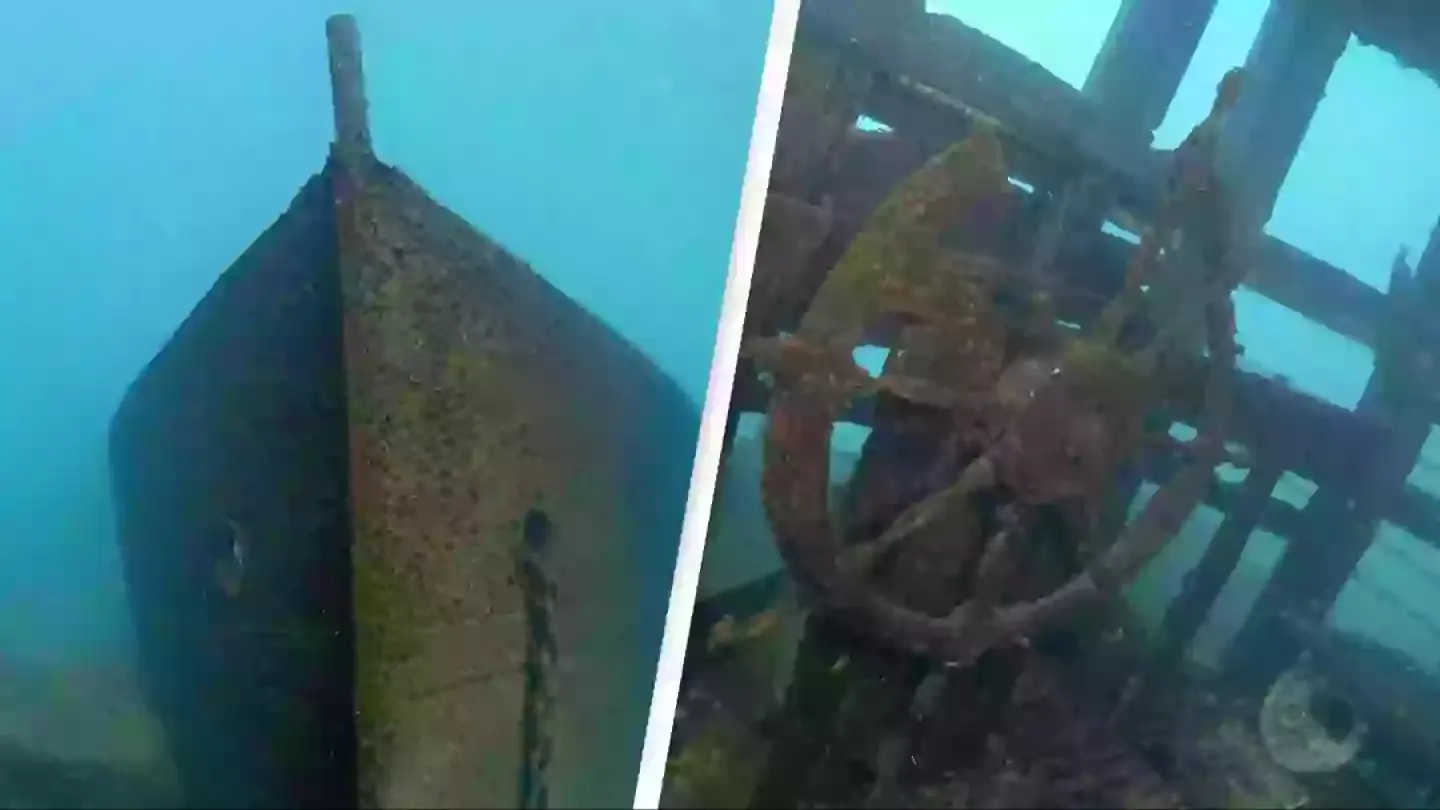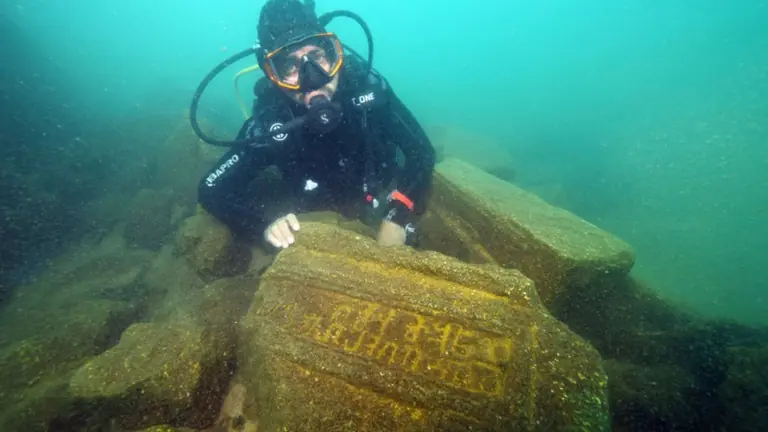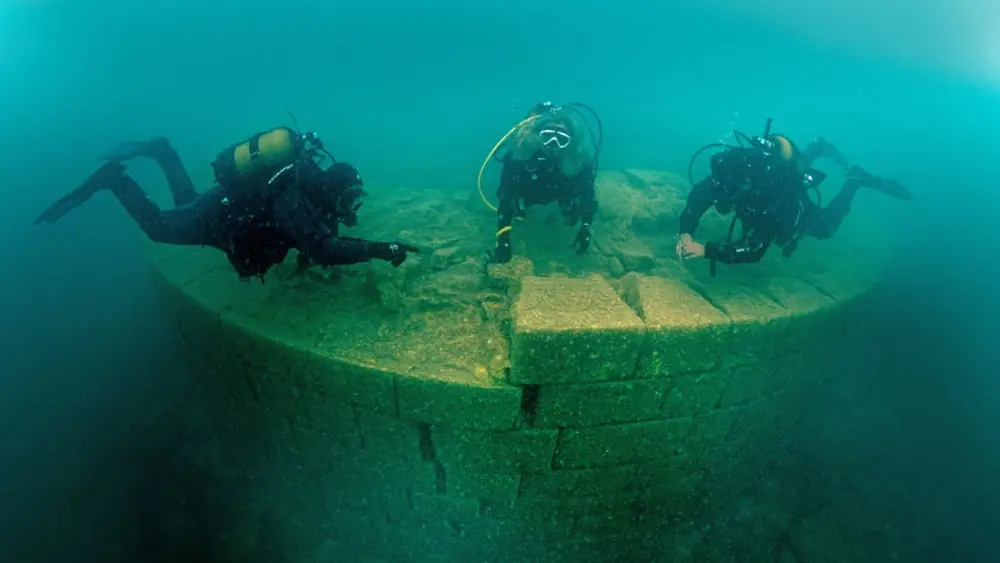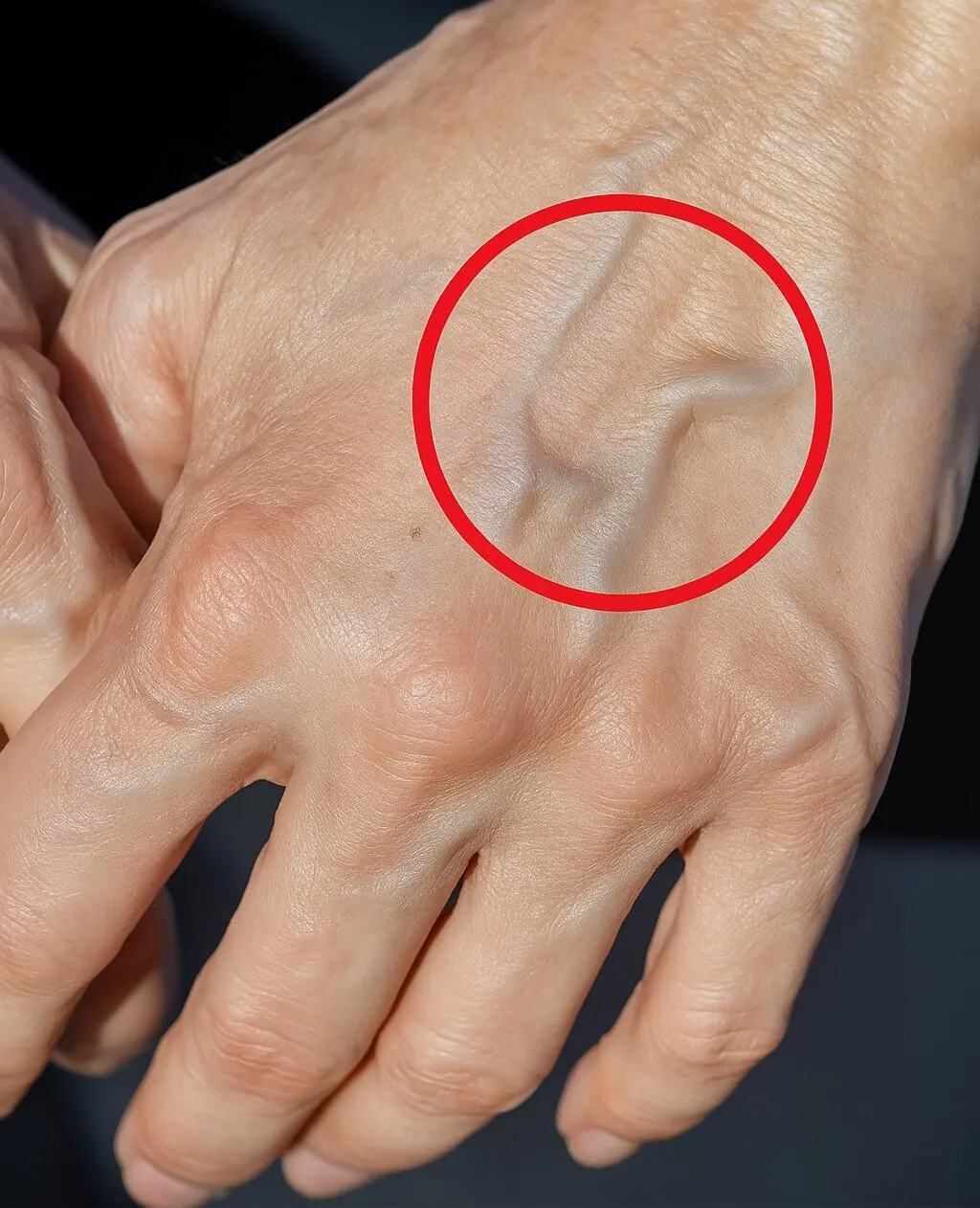
Lost Underwater City Near Noah’s Ark Site Could Rewrite Biblical History Forever
A breathtaking archaeological find beneath the waters of Lake Van, Turkey, is shaking the foundations of one of the most famous stories in human history.
Experts say the submerged ruins, located near the legendary resting place of Noah’s Ark, may hold clues to a forgotten civilization that existed thousands of years before the Bible was written.
The extraordinary discovery of this ancient underwater city—hidden just 150 miles from Mount Ararat—has the potential to rewrite the narrative of the Great Flood as told in the Bible and other ancient texts. Historians believe the site could reveal that an advanced civilization thrived in the region over 12,000 years ago, predating the last Ice Age, and may have inspired the earliest versions of the Noah’s Ark story.
Buried 85 feet below the surface of Lake Van near the town of Gevaş, the city has been dubbed by some as “the real Atlantis of Europe.” First spotted in 1997 by Turkish underwater filmmaker Tahsin Ceylan, the site features breathtaking ruins, including a massive stone fortress and circular temples adorned with a mysterious six-spoked Flower of Life symbol—a design also found in ancient ruins of Peru and Bolivia.
According to archaeologist Matthew LaCroix, who recently discussed the find on the Matt Beall Limitless podcast, the site’s true significance has only recently been recognized. “Unfortunately, Tahsin discovered one of the most significant archaeological finds in history, yet it received little attention because it wasn’t labeled or understood correctly,” LaCroix said. He added that his work is now partly dedicated to ensuring Ceylan receives proper recognition.
What makes the discovery so remarkable is its potential link to the biblical flood. Researchers believe that a massive volcanic eruption from Mount Nemrut thousands of years ago blocked the Mirat River, causing catastrophic flooding during the Younger Dryas period—a dramatic climate event that occurred between 12,900 and 11,700 years ago. Soil evidence in the region supports this theory, aligning with ancient flood myths from various cultures.
Interestingly, the story of a great flood appears in multiple ancient traditions. In Mesopotamian records, the survivor is called Ziusudra or Utnapishtim, figures believed to be precursors to the biblical Noah. The similarities suggest that the tale may have been passed down through millennia, shaped by different cultures along the way.
The advanced stonework of the Lake Van city also raises questions about the technological capabilities of ancient peoples. “As far as I’m aware, no civilization in the last 6,000 years had the means to produce this kind of precision masonry,” LaCroix noted, suggesting that history books may need a significant update.
If confirmed, this discovery could not only transform our understanding of ancient civilizations but also challenge long-held beliefs about one of humanity’s most enduring and sacred stories.
News in the same category


The Truth About Eating the Black Vein in Shrimp Tails

This is why you should keep the bathroom light on when sleeping in a hotel
Leaving your hotel bathroom light on at night might seem unnecessary, but it could be a small habit that makes a big difference for your comfort and safety. From preventing nighttime accidents to deterring intruders, experts say this simple tip can protec

The Mystical Gaboon Viper, Master Of Disguise And Deadly Accuracy

If You See Square Waves Forming In The Ocean, Get Out Of The Water Immediately

A Greenland Shark Born in 1620 is Still Alive Four Centuries Later

15 Things You Should Never Plug Into A Power Strip

China is Developing a Levitating Train That Could Travel From New York to Chicago in Just Two Hours

The world’s oldest woman, who lived to 117, ate the same meal every day throughout her life
Emma Martina Luigia Morano, the world’s oldest woman at the time of her passing, credited her extraordinary 117 years of life to a mix of genetics, resilience, and one very peculiar daily diet. Her remarkable story spans two World Wars, personal tragedy

TikTok’s ‘Vabbing’ Trend Sparks Debate: Does It Attract Partners?

In Sweden, You’re Not Allowed to Leave Your Dog Alone for More Than Six Hours, Here’s the Reason

A A tendon raises up when you touch your pinky to your thumbraises up when you touch your pinky to your thumb

The Hidden Meaning Behind Leg-crossing — It’s More Than Just Comfort

The Sh0cking Truth Behind Your Ankle Bracelet And What It Reveals About You — It’s More Than Just Jewelry
For many, an ankle bracelet is just a delicate, eye-catching piece of jewelry. But behind its shimmer lies a rich tapestry of history, tradition, and hidden symbolism that stretches across cultures and centuries.

11 Heartbreaking Yet Essential Signs Your Dog May Be Nearing the End — And How to Give Them Comfort Until the Last Moment
When you notice these signs, your role transforms from caregiver to emotional anchor. This is the time to be fully present — offering touch, reassurance, and unconditional love.

Harvard Professor Warns: Object Heading Toward Earth Could Be Something Beyond Nature
A massive interstellar object, 3I/ATLAS, is racing toward Earth, and one Harvard astrophysicist believes it may not be natural. With missing comet features and a suspicious trajectory, experts are now debating whether it could be an engineered spacecraft.

What Is SPAM Meat? History, Origin, Ingredients, and How It Became a Global Food Icon
SPAM — the world-famous canned meat — has been sold over 8 billion times and is loved in more than 40 countries. From its humble beginnings during the Great Depression to its role in World War II, here’s the complete story of SPAM’s origin, ingred

Scientists Reverse Aging of a 53-Year-Old’s Skin Cells to That of a 23
News Post

10 Symptoms That May Reveal Health Problems

Experts warn: Don’t swap your oven for an air fryer

Get Rid of Throat Mucus Faster With These Home Treatments (Evidence Based)

Clear Throat Mucus Fast With These Tried-and-Tested Remedies They Don’t Want You to Know

9 Warning Signs of Magnesium Deficiency You Shouldn't Ignore

Poor Postcancer Surgery Outcomes Tied to 3 Factors

Teamwork Boosts Primary Care Doc Job Satisfaction, Cuts Stress

HIV Was Successfully Eliminated from Human Immune Cells Using CRISPR Gene Editing in Landmark Study

Scientists Discover An “Off Switch” For Cholesterol—And It Could Save Millions Of Lives

How to Treat Urinary Tract Infection (UTI) Naturally According to Science

4 Common Causes of Body Pain on the Right Side

The Truth About Eating the Black Vein in Shrimp Tails

12 Subtle Vitamin D Deficiency Symptoms That Most People Ignore

What Your Heart Experiences When You Drink Energy Drinks

How to Eat Right for Your Blood Type

Eyes Full of Hope, Heart Full of Trust.

When to Worry About Veins That Appear Out of Nowhere

This is what sleeping on the left side does for our brain, stomach & glymphatic health
Sleeping position might be the last thing you think about before bed, but it can have a powerful impact on your health. Experts say that lying on your left side could improve digestion, support brain detox, ease back pain, and even enhance circulation.

I Haven’t Seen My Daughter in 13 Years — Then a Letter Arrived from a Grandson I Never Knew

This is why you should keep the bathroom light on when sleeping in a hotel
Leaving your hotel bathroom light on at night might seem unnecessary, but it could be a small habit that makes a big difference for your comfort and safety. From preventing nighttime accidents to deterring intruders, experts say this simple tip can protec